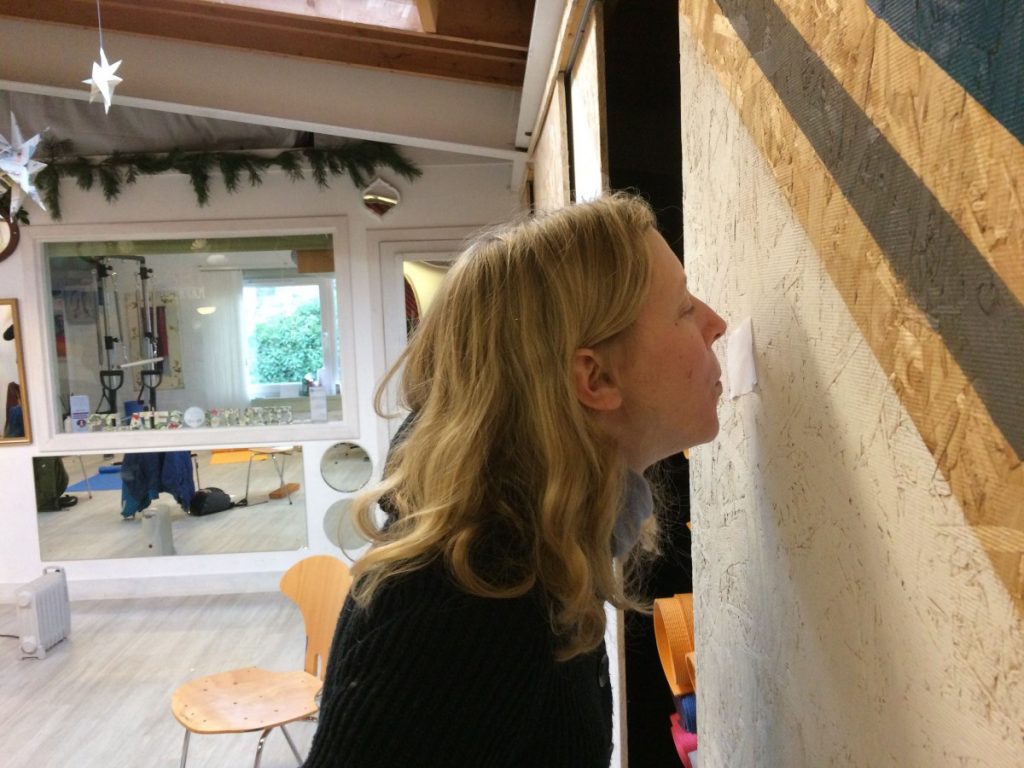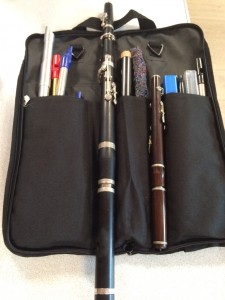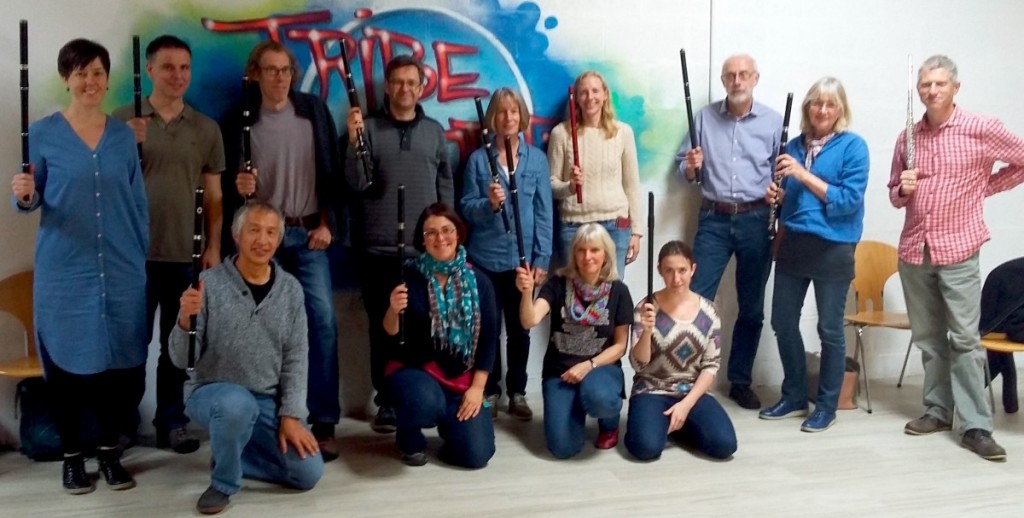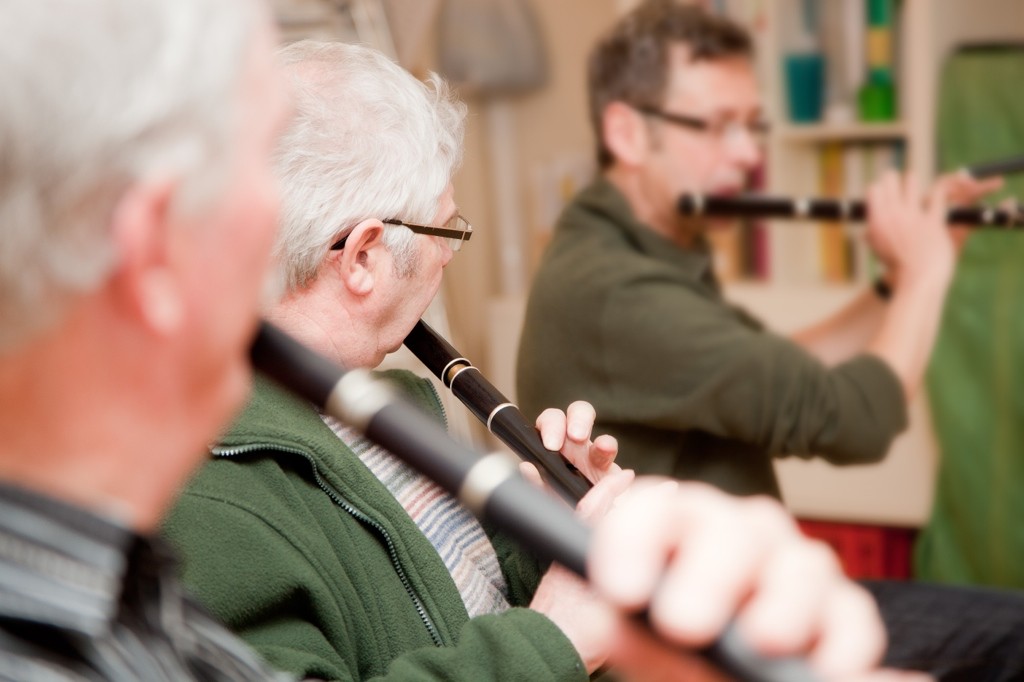The FluteFling January workshop explored some of the issues around decoration, looking at cuts and strikes, their combining into rolls and the construction of crans. Techniques for finger decoration are the same on flutes and whistles alike.
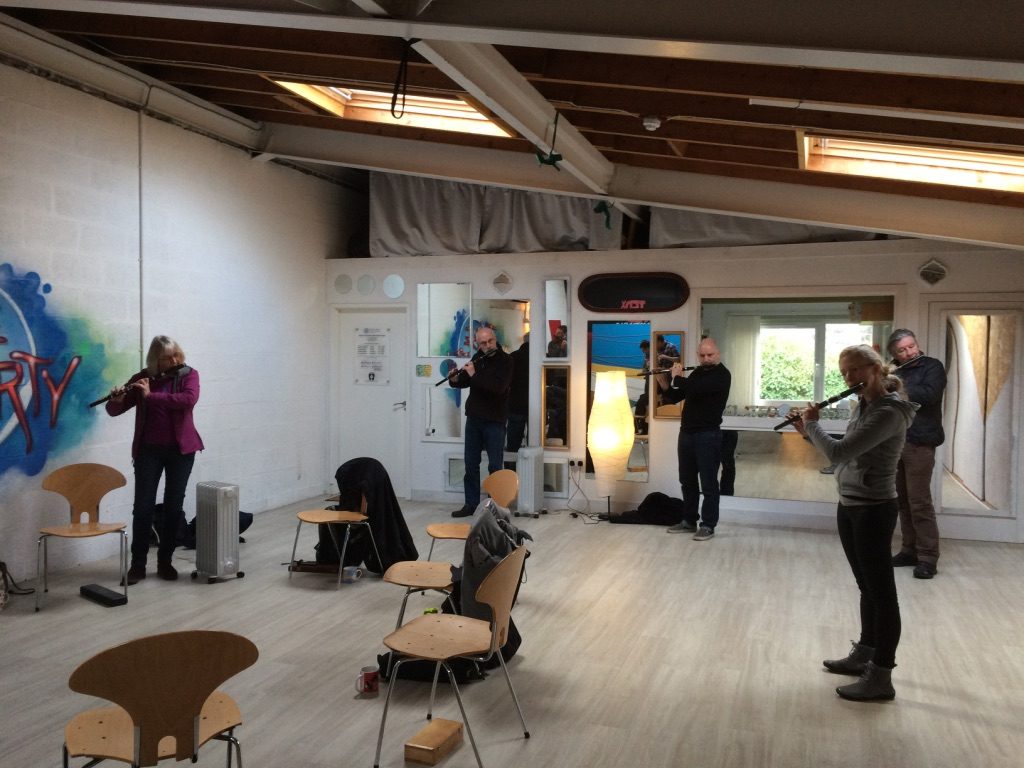 We focused on Irish music as this generally lends itself to decoration more readily than the Scottish repertoire, there are more examples and anything gleaned can then be applied to a Scottish context.
We focused on Irish music as this generally lends itself to decoration more readily than the Scottish repertoire, there are more examples and anything gleaned can then be applied to a Scottish context.
A method for cuts, strikes and rolls
We began by familiarising ourselves with Breton flute player Sylvain Barou and his method for practicing cuts, strikes and rolls that he demonstrated at a flute weekend at Wiston Lodge a good few years back now. While this isn’t a hard and fast rule (more on that below), this serves as a useful foundation and hopefully allows people to experiment with confidence.
The method is based on scales, applying initially a single cut to each note of the scale as it is played. A cut is a very quick decoration from above, played by momentarily raising a single finger to sound the decorating note; other fingers remain in position, so making the note imperfect. This is because the point is a quick interruption of the note being decorated, not to play a separate note.
The best way to work with these is to think of them as finger actions or movements. For the bottom hand notes, cut using the G finger (sounding a notional A); for upper hand notes, cut using the B finger (sounding a notional C).
A parallel exercise is to try this with strikes as grace notes. A single grace note, the finger below the played note is struck, or bounced quickly to sound the note below. A strikes is also referred to as a tap, pat or bounce. Of course you can’t do this on D, although it could be possible if using keys, however I have never seen it done.
Rolls consist of a cut followed by a strike, so the next exercise is to combine these elements following the methods already explored. By doing so, a five note combination is created. For example, with grace notes in brackets, a roll on A would become:
A-(cut)-A-(strike)-A
OR
A-(c)-A-(G)-A
A roll on D or d is not possible, but a cran is. Borrowed from uilleann piping, the cran consists of three cuts from above. There is more than one way of playing these:
D-(A)-D-(G)-D-(F#)-D (standard)
OR
D-(A)-D-(F#)-D-(G)-D (my version, also June McCormack)
We looked at working in the lower register, but of course you can try this out using the full scale and octave jumps too. Arpeggios and other note combinations are possible ways of extending and building upon these exercises. When working on these, try them slowly at first and then build up speed as your fingers get used to the actions.
When learning tunes, consider applying cuts as grace notes as a way of building up to rolls. You can add the strikes at a later point.
Some thoughts
Rolls and decoration should be used as appropriate. It’s a matter of taste and it is also possible to lose the tune or timing in a flurry of notes. Micho Russell, Conal O Grada and Harry Bradley (see below) are examples of flute players who don’t use very much decoration or if so, simpler decoration.
Taste too, dictates which notes are used to perform these decorations. I learned with a note above and a note below, for example. However a greater contrast (and thereby definition) can be found using high cuts and low strikes. Most people will use a variety.
Double cut, casadh, condensed rolls, shortened condensed rolls, shortened crans and others are all variations on these techniques and worthy of some time in forthcoming workshops.
You probably also need to check out Roger Millington’s excellent Brother Steve’s Tin Whistle Pages, in particular the “dah-blah-blah” method. Be sure to explore the site, including the recordings of various recitals and sessions.
Repertoire
I suggested that the Irish repertoire is a better place to pick up many of the rudiments than Scottish music. Flutes have a friend in the uillean pipes and share a common decoration language. Of course such spaces do exist in Scottish music, but they are less abundant.
The tunes we explored are below. A PDF of the written music is here:
The Golden Stud: a reel that rolls
I find that this is a good tune for getting the fingers going. There are a few ways of playing it, but at some point you will play ascending rolls. It’s the middle tune here:
Rolls – the long, short and middle of it
As promised, here is a link to Niall Keegan’s paper on The Parameters of Style in Irish Music, which has a particular lean towards flutes. Published in Inbhear, The Journal of Irish Music and Dance, it’s a long read with plenty of clips of Niall illustrating the points he makes.
As emerged at the workshop, there is more than one way of playing and writing out rolls and part of it is to do with their duration: are they long or short? If so, where does the emphasis lie? For my money, a long roll tends to have a lead-in or lead-out note, which a short roll does not. I suspect that short rolls may feature more than long rolls in the Scottish repertoire.
Niall Keegan’s take on decoration is on this page.
If you really wish to explore this further in reading, parts of Gray Larson’s book can be found in this link.
An old new jig: Jane Craggs
The second tune we learned was one of my own, named for a friend on her birthday in 1987 and so 30 years old this year as was pointed out. I had included the jig for reference but somehow it caught people’s interest. It was picked up by a few people, including Tom McKean of the American band Dun Creagan:
When I play the tune today I tend to use rolls on the long B and F# notes but initially didn’t do so very much as they were still a challenge, especially on the flute due to hand positions. So feel free to play them either way. The high B jump also presents a little technical challenge.
Other tunes
I have included music and recordings for two Irish jigs, The Legacy and Sonny Brogan’s, and The Green Mountain, an Irish reel I learned from Skye-based uillean piper Duncan MacInnes.
Other resources and inspiration
We mentioned a few interesting people. I have included links, but it is worth googling them to find out so much more:
- Niall Keegan
- June McCormack’s books Flúit and Flúit 2
- Micho Russell
- Harry Bradley
- Conal O Gráda
- Matt Molloy
- Niall Kenny
- Calum Stewart
- Catherine McEvoy See also the other interviews on this web site.
- For something on regional flute styles, see the articles on my rather neglected web site, The Flow
The next workshop takes place on Saturday 18th February.

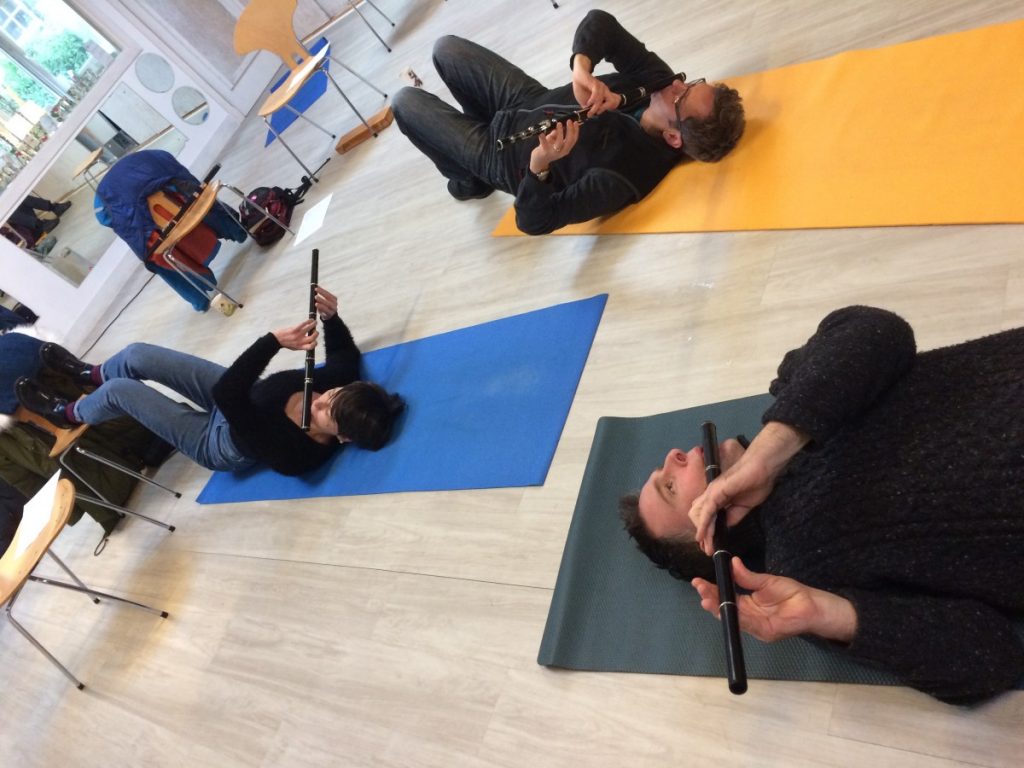
 We included a refinement that brought us closer to the
We included a refinement that brought us closer to the 